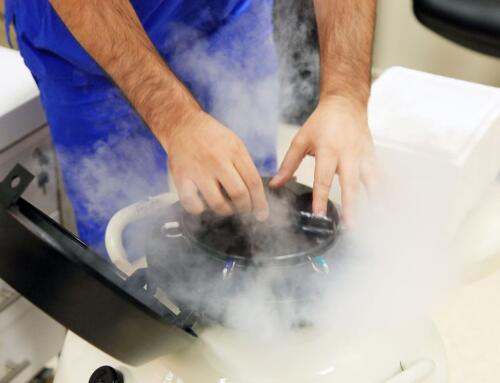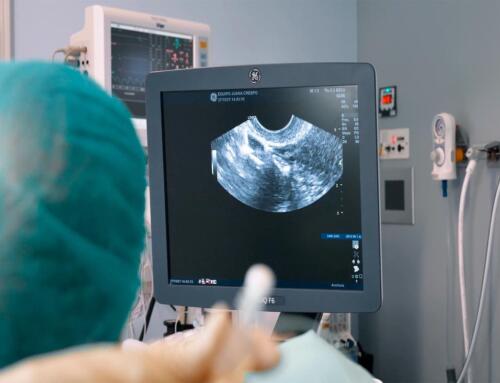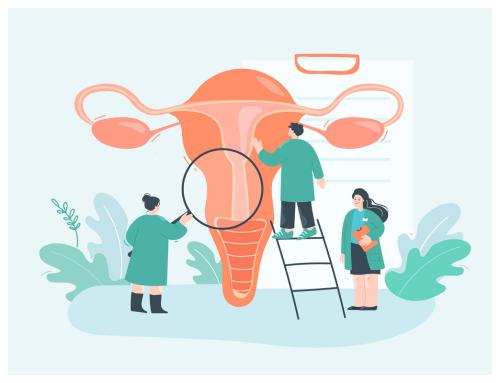Some uterine pathologies, such as Asherman’s syndrome, fibroids, congenital abnormalities, or endometrial polyps, can be the cause of infertility, recurrent miscarriage, or premature birth.
Its diagnosis and treatment are crucial to achieve a viable pregnancy, requiring the intervention of professionals and specialists in gynecology and assisted reproduction.
What is Asherman’s Syndrome?
Asherman’s syndrome is an acquired and rare uterine pathology.
Its main characteristic is the development of scars (uterine adhesions), generally associated with a history of dilation and curettage or intrauterine surgeries, which lead to the formation of adhesions in the cervix and/or between the walls of the uterus, causing it to deform and, in some cases, reduce in size.
How does Asherman’s syndrome affect fertility?
The alteration of the uterine cavity due to Asherman’s syndrome can be associated with fertility problems, including difficulties in embryo implantation and recurrent miscarriages.
It can also lead to gynecological symptoms such as secondary amenorrhea, hypomenorrhea, or pelvic pain, which we will discuss further.
Why does it occur? What are its causes?
As mentioned earlier, Asherman’s syndrome is an acquired condition.
It occurs most commonly in women who have undergone dilation and curettage procedures after a voluntary or spontaneous abortion.
Other causes that can lead to the formation of scar tissue in the uterus include:
- Severe pelvic infections, such as tuberculosis and schistosomiasis.
- Intrauterine surgeries, such as myomectomy.
- Trauma.
- Endometriosis.
According to the International Asherman’s Association, this alteration of the uterine cavity affects 1.5% of women who have undergone hysterosalpingography, between 5% and 39% of women with recurrent miscarriages, and up to 40% of patients who have undergone dilation and curettage due to retained products of conception after childbirth or incomplete abortion.
How can I know if I have Asherman’s syndrome?
Asherman’s syndrome presents common symptoms, including:
- Absence of menstrual periods or scanty menstruation (amenorrhea) due to adhesions obstructing the passage of menstruation from the uterus to the vagina.
- Pelvic or abdominal pain due to the retention of menstrual bleeding.
- Retrograde menstruation. In some cases, difficulties in expelling endometrial tissue during menstruation can lead to its backward release into the abdominal cavity through the fallopian tubes, forming endometriosis implants.
- Recurrent miscarriages due to the deformation of the uterine cavity and the inability of the embryo to implant in the uterine walls.
When these symptoms suddenly appear after a dilation and curettage, scraping, or other uterine surgery, the risk of developing the disease is quite high. However, since this symptomatology can be related to other gynecological pathologies, more precise tests are usually required for diagnosis.
Diagnosis of Asherman’s syndrome
In most cases, Asherman’s syndrome cannot be predicted or prevented.
The first step in determining if a woman has this anomaly is to check for adhesions and abnormalities in the uterine cavity.
The gynecologist will review the patient’s medical history on one hand and perform some tests on the other.
These tests include:
- Transvaginal ultrasound
Common in clinics, quick, and minimally invasive, it allows for the observation of the interior of the uterine cavity. However, interpreting the obtained images can sometimes require more specialized techniques.
- Hysterosalpingography (HSG)
A combination of X-rays with contrast dye that “maps” the shape of the uterus and fallopian tubes. The image is captured through X-rays. It is a very effective technique for detecting adhesions, obstructions, and other uterine abnormalities such as fibroids or polyps.
- Hysteroscopy
If ultrasound and hysterosalpingography do not provide conclusive data, experts may perform a diagnostic hysteroscopy. In other words, they will introduce a camera into the uterine cavity. Diagnosing Asherman’s syndrome and establishing a precise diagnosis is much easier with this test since it allows direct visualization of adhesions.
Is there a cure for Asherman’s syndrome?
Asherman’s syndrome has only one treatment: cutting and removing scar tissue so that the uterus regains its normal shape and size.
The surgical procedure is performed by hysteroscopy, using small instruments and a camera inserted into the uterus through the cervix.
Once the adhesions have been removed, the uterine cavity must be kept expanded (we must not forget that this syndrome occurs when the normal healing process in the uterus is triggered) using various methods:
- Foley catheter: It is a kind of “balloon” inserted into the uterus to keep the uterine walls separated while the wounds heal.
- Placement of an IUD.
- Application of a specific gel to prevent the formation of new scars.
The success of Asherman’s syndrome treatment depends on the severity of the condition; the more severe it is, the more likely adhesions and scars may reoccur.
Is a pregnancy viable with Asherman’s syndrome?
Yes, a pregnancy is possible with Asherman’s syndrome. However, while Asherman’s syndrome does not prevent fertilization, the presence of adhesions and limited space in the uterus can compromise both embryo implantation and development, increasing the risk of miscarriage.
Furthermore, in a pregnancy with Asherman’s syndrome, there is a higher likelihood of placental problems (placenta previa and placenta accreta) or cervical incompetence even after treatment, posing risks to both the mother and the baby.
When adhesions in the uterine cavity are detected, the general recommendation is to undergo surgical intervention before attempting pregnancy or starting assisted reproduction treatment.
















